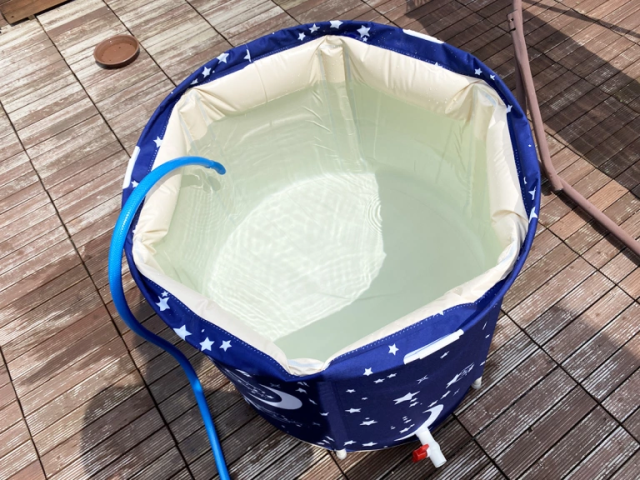
Just because you can’t go to a hot spring doesn’t mean you can’t have a sublime soak.
As in many countries, right now a lot of people in Japan are frustrated about not being able to go out to eat because of the coronavirus. A unique frustration to life during the pandemic in Japan, though, is the frustration of not being able to go out to take a bath.
Japan is rich in natural hot springs, and even in the urban environment, you can find public bathhouses where you can soak away the physical aches and mental fatigue of even the most hectic day. The highlight of a hot spring trip is always the rotenbuo, or open-air bath, but with Tokyo’s number of new coronavirus infections hitting record highs this week, our Japanese-language reporter Go Hatori has been doing the responsible thing and staying home, which also means bathing at home, and thus indoors.
“But man, I could really use a rotenburo soak,” Go thought to himself while scouring the Internet for ways to use his share of the company expense account, which is when he found something that would simultaneously solve both his problems: a portable bathtub.
Offered by a company called 8tail for 4,980 yen (US$47) here, this was an instant purchase by Go, who waited impatiently for it to arrive. When it did, he quickly opened up the box and found the soft-sided material for the tub itself as well as a bundle of plastic parts to assemble the frame with.
According to the instructions, putting everything together should only take about three minutes, and they weren’t lying, as Go really was able to get everything done in that much time. The process is sort of like putting together a tent, only simpler and with far less swearing and regret about not just renting a cabin instead.
Since he was after the rotenburo experience, Go’s plan was to use the tub on his balcony, but this presented a slight problem, because he doesn’t have a hot water source out there. So while he was ordering the portable bathtub he also picked up an adapter that would let him hook a hose up to his kitchen sink here, which cost him an extra 600 yen.
▼ But remember, expense account
With that, it was time to fill the tub. Since the flow of water was limited to what his kitchen faucet could pump out, this ended up taking about 30 minutes. This isn’t that big of an inconvenience, though, because if you’re bathing Japanese-style, you’re supposed to shower first and then hop into the tub with an already-clean body, so that half-hour is enough time to take care of washing yourself prior to your soak.
Once the tub was filled, Go poured in a packet of hot spring-style bath salts…
…and then all that was left to do was strip down and hop in!
And just like that, less than an hour after the package had been delivered to Go’s door…
…he was delivered to paradise.
Sure, it’s not the largest tub, but even these compact dimensions aren’t entirely out of line with the Japanese hot spring experience. As a matter of fact, at any hot spring one of the most coveted spots is an okeburo, a barrel-like single-occupant bathtub.
Best of all, the material the portable bathtub is made from does a remarkably good job retaining heat, so Go’s water stayed nice and warm for his entire soak.
So with a hot spring trip still looking a little dicey for the near future, if you’re looking for Go and can’t seem to find him, check his balcony.
Images ©SoraNews24
● Want to hear about SoraNews24’s latest articles as soon as they’re published? Follow us on Facebook and Twitter!
[ Read in Japanese ]

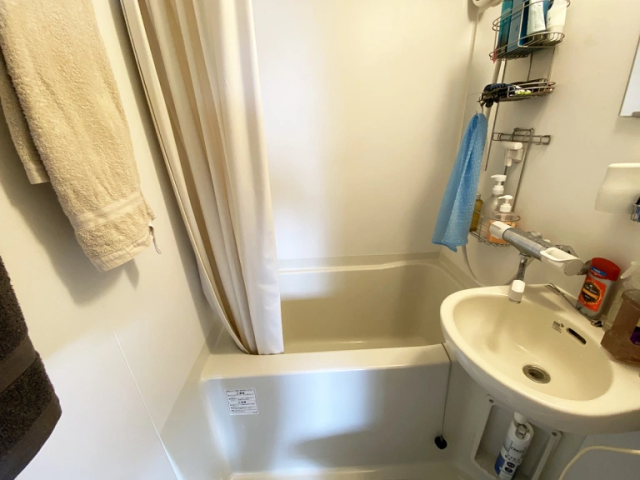
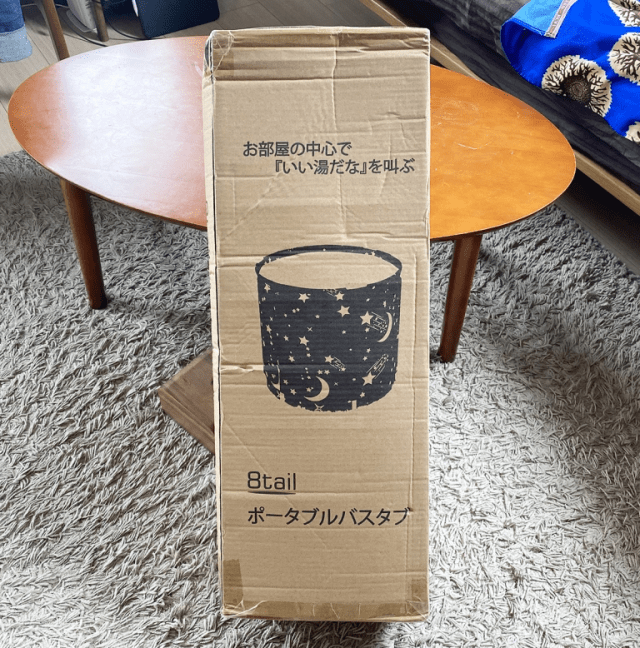
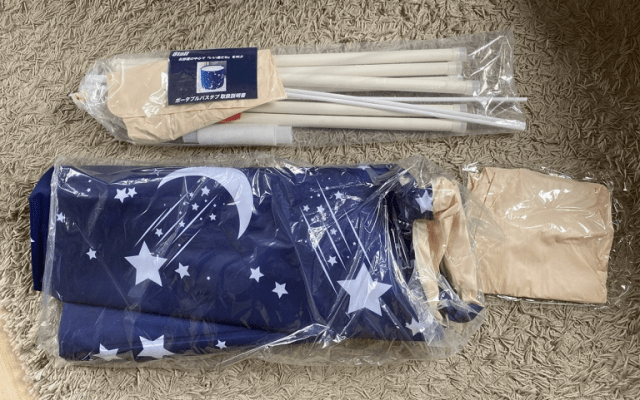
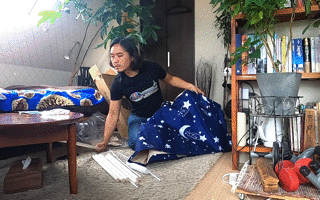
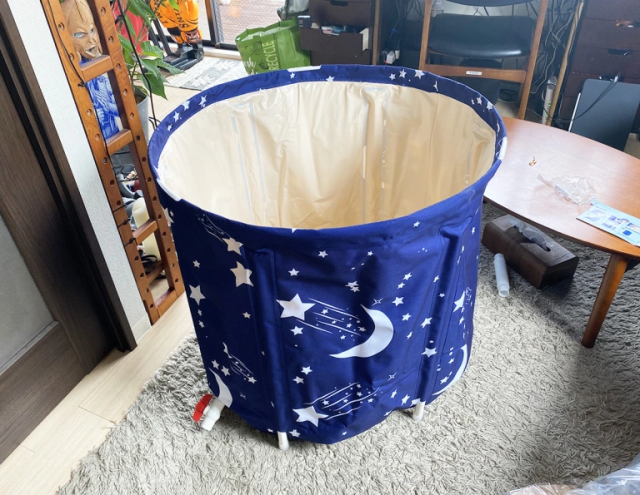
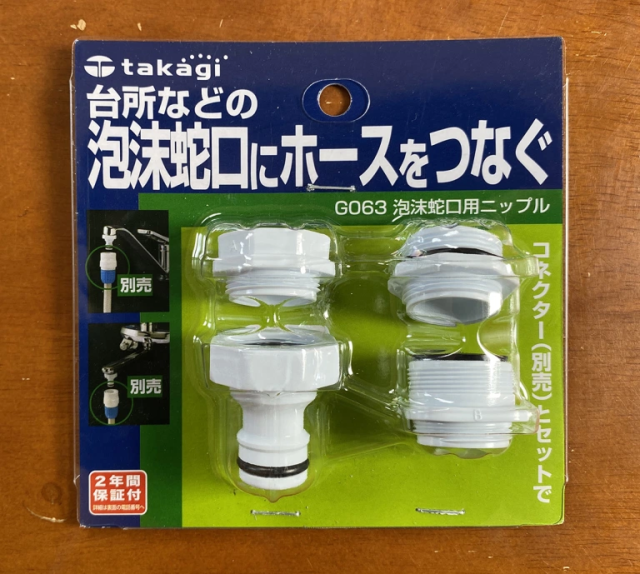
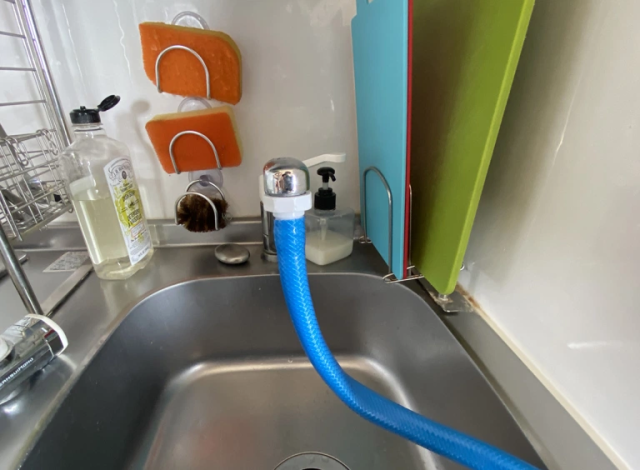
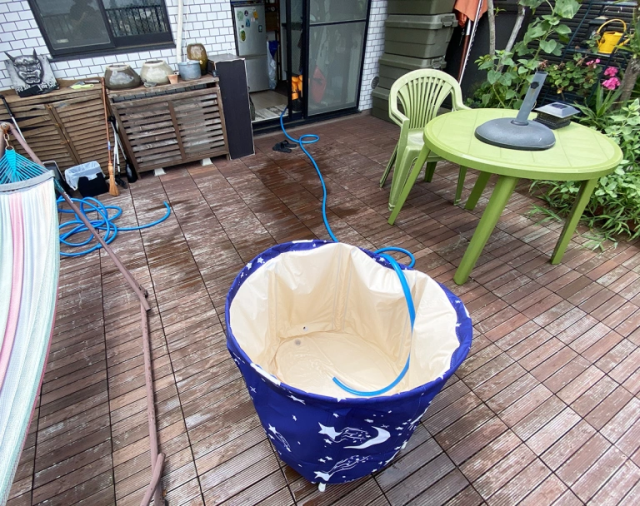

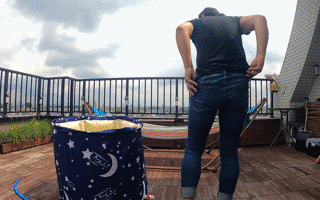
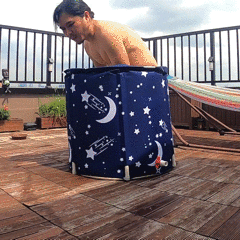
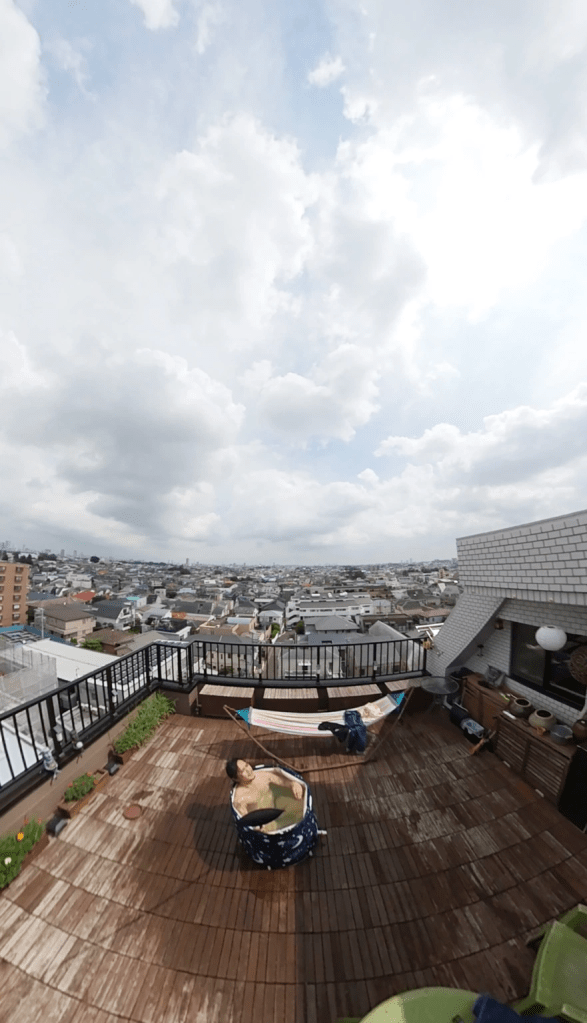
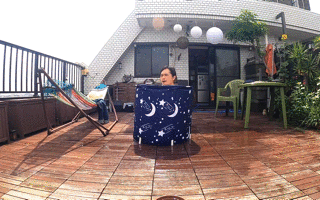
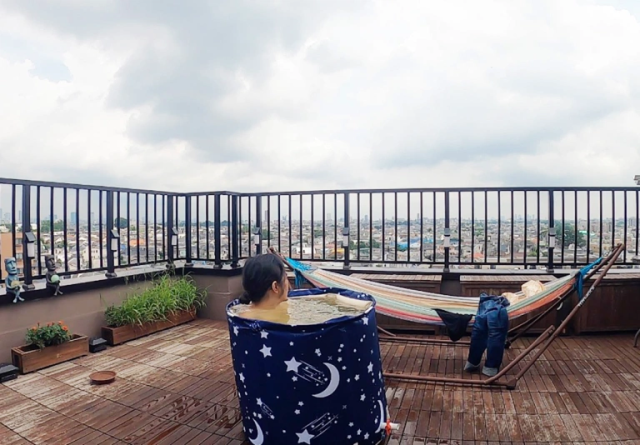
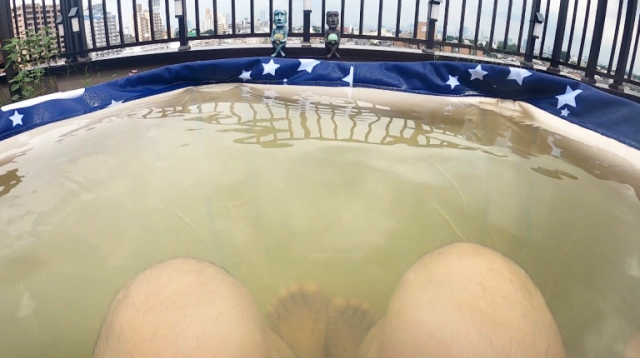

 Princess Mononoke’s Great Forest Spirit figure adds solemn Ghibli style to any home【Photos】
Princess Mononoke’s Great Forest Spirit figure adds solemn Ghibli style to any home【Photos】 Can the lowest-rated portable bathtub on Amazon Japan make our office a relaxing bathhouse?【Pics】
Can the lowest-rated portable bathtub on Amazon Japan make our office a relaxing bathhouse?【Pics】 Onsen hot spring with Mt Fuji views has one of the best rotenburo in Japan
Onsen hot spring with Mt Fuji views has one of the best rotenburo in Japan Solaniwa Onsen: Kansai’s largest hot spring theme park is also one of its most beautiful
Solaniwa Onsen: Kansai’s largest hot spring theme park is also one of its most beautiful How to make your own KFC bath without Japan’s official Kentucky Fried Chicken bath salts【Video】
How to make your own KFC bath without Japan’s official Kentucky Fried Chicken bath salts【Video】 Japan’s new difficult-to-drink-from beer glass protects your liver, but it’s a brutal experience
Japan’s new difficult-to-drink-from beer glass protects your liver, but it’s a brutal experience How to order snacks on a Shinkansen bullet train in Japan
How to order snacks on a Shinkansen bullet train in Japan Caffeinated ramen for gamers that you can eat with one hand going on sale in Japan
Caffeinated ramen for gamers that you can eat with one hand going on sale in Japan Hello, cosmetics! Clinique teams up with Hello Kitty this summer for first-time collaboration
Hello, cosmetics! Clinique teams up with Hello Kitty this summer for first-time collaboration Demon Slayer: Kimetsu no Yaiba gets new roller coaster attractions and food at Universal Studios Japan
Demon Slayer: Kimetsu no Yaiba gets new roller coaster attractions and food at Universal Studios Japan To combat declining birth rate, Japan to begin offering “Breeding Visas” to foreigners
To combat declining birth rate, Japan to begin offering “Breeding Visas” to foreigners High-fashion Totoro cuddle purse is like an elegant stroll in the forest【Photos】
High-fashion Totoro cuddle purse is like an elegant stroll in the forest【Photos】 Gigantic new anime store opening soon in Tokyo, and here’s a sneak-peek【Photos】
Gigantic new anime store opening soon in Tokyo, and here’s a sneak-peek【Photos】 We investigate the newly released film revival of Hayao Miyazaki’s Sherlock Hound
We investigate the newly released film revival of Hayao Miyazaki’s Sherlock Hound Doraemon found buried at sea as scene from 1993 anime becomes real life【Photos】
Doraemon found buried at sea as scene from 1993 anime becomes real life【Photos】 Nintendo history you can feel – Super NES, N64, and GameCube controllers become capsule toys
Nintendo history you can feel – Super NES, N64, and GameCube controllers become capsule toys “The most Delicious Cup Noodle in history” – Japan’s French Cup Noodle wins our heart【Taste test】
“The most Delicious Cup Noodle in history” – Japan’s French Cup Noodle wins our heart【Taste test】 Starbucks releases a cute Frappuccino and Unicorn Cake…but not in Japan
Starbucks releases a cute Frappuccino and Unicorn Cake…but not in Japan Kyoto Tower mascot termination reveals dark side behind cute Japanese characters
Kyoto Tower mascot termination reveals dark side behind cute Japanese characters McDonald’s Japan’s Soft Twist Tower: A phantom ice cream only sold at select branches
McDonald’s Japan’s Soft Twist Tower: A phantom ice cream only sold at select branches Yabai Ramen: What makes this Japanese ramen so dangerous?
Yabai Ramen: What makes this Japanese ramen so dangerous? Finally! Nintendo Japan expands Switch 8-bit controller sales to everybody, Online member or not
Finally! Nintendo Japan expands Switch 8-bit controller sales to everybody, Online member or not Japanese government wants to build luxury resorts in all national parks for foreign tourists
Japanese government wants to build luxury resorts in all national parks for foreign tourists 10 things you should buy at 7-Eleven in Japan
10 things you should buy at 7-Eleven in Japan Studio Ghibli releases anime heroine cosplay dresses that are super comfy to wear
Studio Ghibli releases anime heroine cosplay dresses that are super comfy to wear Woman charged for driving suitcase without a license in Osaka
Woman charged for driving suitcase without a license in Osaka Studio Ghibli unveils My Neighbour Totoro miniature house model
Studio Ghibli unveils My Neighbour Totoro miniature house model Kyoto experiencing problems with foreign tourists not paying for bus fares, but not on purpose
Kyoto experiencing problems with foreign tourists not paying for bus fares, but not on purpose Fighting mild hunger with a Japanese soda that turns into jelly in the stomach【Taste test】
Fighting mild hunger with a Japanese soda that turns into jelly in the stomach【Taste test】 Studio Ghibli’s Howl’s Moving Castle tapestry unveiled in Japan for first time
Studio Ghibli’s Howl’s Moving Castle tapestry unveiled in Japan for first time McDonald’s new Happy Meals offer up cute and practical Sanrio lifestyle goods
McDonald’s new Happy Meals offer up cute and practical Sanrio lifestyle goods Sales of Japan’s most convenient train ticket/shopping payment cards suspended indefinitely
Sales of Japan’s most convenient train ticket/shopping payment cards suspended indefinitely Sold-out Studio Ghibli desktop humidifiers are back so Totoro can help you through the dry season
Sold-out Studio Ghibli desktop humidifiers are back so Totoro can help you through the dry season Japanese government to make first change to romanization spelling rules since the 1950s
Japanese government to make first change to romanization spelling rules since the 1950s Foreigner’s request for help in Tokyo makes us sad for the state of society
Foreigner’s request for help in Tokyo makes us sad for the state of society Ghibli founders Toshio Suzuki and Hayao Miyazaki contribute to Japanese whisky Totoro label design
Ghibli founders Toshio Suzuki and Hayao Miyazaki contribute to Japanese whisky Totoro label design Tokyo’s most famous Starbucks is closed
Tokyo’s most famous Starbucks is closed Princesses, fruits, and blacksmiths: Study reveals the 30 most unusual family names in Japan
Princesses, fruits, and blacksmiths: Study reveals the 30 most unusual family names in Japan Soak in a sand bath in Beppu, Japan’s famous onsen region
Soak in a sand bath in Beppu, Japan’s famous onsen region Beautiful new Tokyo hotel gives you the best of both worlds with hot spring bath in the big city
Beautiful new Tokyo hotel gives you the best of both worlds with hot spring bath in the big city Apartments with no bath or shower rising in popularity among young Tokyoites, report says
Apartments with no bath or shower rising in popularity among young Tokyoites, report says Rub-a-dub-dub and relax in a tub: Survey reveals wintertime bathing habits across Japan
Rub-a-dub-dub and relax in a tub: Survey reveals wintertime bathing habits across Japan A private onsen bath with a karaoke machine is two of Japan’s best things with zero embarrassment
A private onsen bath with a karaoke machine is two of Japan’s best things with zero embarrassment Huge crowds gather for Halloween in Japan despite calls to stay home【Photos】
Huge crowds gather for Halloween in Japan despite calls to stay home【Photos】 A whole bunch of capybara videos to help ease your presidential election stress【Videos】
A whole bunch of capybara videos to help ease your presidential election stress【Videos】 This bath bomb looks and feels like an Edo gold bar, is great for gifts or bathing like a shogun
This bath bomb looks and feels like an Edo gold bar, is great for gifts or bathing like a shogun Recreate a Japanese ofuro in your own bathtub and support traditional craftsmen with Pocket Onsen
Recreate a Japanese ofuro in your own bathtub and support traditional craftsmen with Pocket Onsen Onsen in Japan uses the same mysterious hot spring bathing system from Ghibli film Spirited Away
Onsen in Japan uses the same mysterious hot spring bathing system from Ghibli film Spirited Away Soup not soap: Japanese public bathhouses surviving by converting into retro-chic cafés
Soup not soap: Japanese public bathhouses surviving by converting into retro-chic cafés Resident Evil Umbrella green, red herb bath salts now exist in real world, are terrifying【Pics】
Resident Evil Umbrella green, red herb bath salts now exist in real world, are terrifying【Pics】 The 10 best hotel hot springs in Japan, as chosen by Japanese travelers
The 10 best hotel hot springs in Japan, as chosen by Japanese travelers You can make your own hot spring bath at this river in central Japan【Japan travel】
You can make your own hot spring bath at this river in central Japan【Japan travel】 Japanese hot spring adds roaring Godzilla Invasion Cave, other kaiju-related relaxation options
Japanese hot spring adds roaring Godzilla Invasion Cave, other kaiju-related relaxation options
Leave a Reply